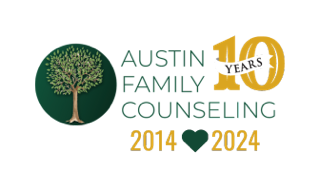Becoming an EMDR Trained Therapist is one of the most exciting things I have ever done. It is my honor and my joy to work with persons who have carried terrible burdens of trauma and pain for many years; and to help them unload those burdens, and find healing, hope, and peace.
Alphabet soup
The acronym EMDR stands for “Eye Movement Desensitization and Reprocessing.” That is a mouthful. I would define EMDR therapy as “a powerful way to assist your brain’s natural healing process.” This solidly-researched psychotherapy method helps people recover from trauma, PTSD, anxiety, depression, panic disorder, addiction, and many other difficulties in living.
Your brain knows how to heal
Each day, our brains absorb a huge amount of information. Many things happen to us, both good and bad. Our brains sift out the key information, and store it in a form that will help us handle new experiences. This is how we learn from the past, adapt to our environment, and prepare ourselves for the future.
Your brain knows how to heal, just as your body knows how to heal. When bad things happen to us, our brain heals from them—much as your skin heals from a cut. Much of the daily healing of our brains occurs while we sleep.
Trauma interrupts healing
Trauma interrupts the brain’s natural healing process. Trauma is an intensely disturbing or distressing experience that overwhelms our ability to cope. When you experience a trauma, your brain is unable to do its normal processing of that event. Your brain is unable to put the memory in a form that is useful for the future. Instead, the memory gets stuck in its original, raw, disturbing form—including distressing thoughts, emotions, and body sensations.
EMDR therapy restarts healing
The role of an EMDR therapist is to restart your brain’s natural healing process. The therapist follows carefully-researched methods that guide your brain to heal naturally. One of my mentors compared an EMDR therapist to a midwife. A midwife assists a woman as she gives birth naturally; the midwife intervenes only when necessary. Likewise, an EMDR therapist assists a client as his or her brain heals naturally; the therapist intervenes only when necessary.
Where did EMDR therapy come from?
In 1987, American psychologist Francine Shapiro, Ph.D., made a chance discovery. While walking through a park, thinking about a disturbing memory, she happened to be moving her eyes rapidly from side to side. After her walk, she noticed that while the memory remained, it no longer disturbed her. Fascinated, she dedicated the rest of her life to researching this phenomenon, and developing it into a powerful method for healing. Many researchers all over the world joined in her work. After Dr. Shapiro’s untimely death in 2019, EMDR research has continued.
EMDR therapy has been extensively researched, all over the world, for over 30 years. Research has shown that EMDR therapy is effective not only for trauma counseling and PTSD recovery, but also for anxiety, depression, panic disorders, substance use and addiction, and many other mental health needs. EMDR therapy yields deep, lasting healing. For many clients, EMDR therapy yields results faster than other methods of psychotherapy.
Eye movements
Typically, an EMDR therapist guides the client to move their eyes rapidly from side to side. In some situations, a therapist may choose tapping, or some other form of side-to-side stimulation, instead. It is thought that the side-to-side stimulation, rapidly alternating left-right-left-right, stimulates the left and right hemispheres of the brain to work cooperatively with each other in the healing process.
EMDR therapy is safe and effective
EMDR therapy works. EMDR therapy has 30 years of solid research behind it. Highly respected health organizations—including the American Psychological Association, the National Alliance on Mental Illness, the Substance Abuse and Mental Health Services Administration, the United States Department of Veterans Affairs, and the World Health Organization—have endorsed EMDR therapy as a safe, effective, evidence-based treatment.
EMDR therapy is based on the neurobiology of the brain. Neurobiology is a field that has advanced greatly in the past 30 years. New discoveries in neurobiology show that EMDR therapy brings about real, observable, biological healing in the brain.
EMDR therapy may be related to REM sleep
Researchers think that the rapid, side-to-side eye movements used in EMDR therapy resemble the rapid eye movements that we experience during part of the time that we are asleep. Have you ever seen a sleeping person whose eyes are moving side to side, under their closed eyelids? This is called Rapid Eye Movement (REM) sleep. It is thought that REM sleep is an important part of our brains’ healing process.
When the EMDR therapist guides the client to move their eyes rapidly from side to side, this may mimic REM sleep. However, during EMDR therapy, the client is wide awake and fully in control of his or her thoughts and actions.
EMDR therapy is a holistic approach
EMDR therapy is not a quick fix. EMDR therapy is not a technique, or a collection of techniques.
EMDR therapy is an integrated, holistic approach to mental health care. Like any other form of counseling, it is built on the solid foundation of your having a good, working relationship with your therapist. You and your EMDR therapist will take time to build a relationship of mutual trust. A good EMDR therapist will treat you with deep respect, empathy, and unconditional positive regard. He or she will notice your strengths, point them out to you, and help you believe in them.
EMDR therapy accesses the “emotional brain”
EMDR therapy helps make connections between your thinking and your feelings. EMDR therapy helps bridge the gap between your head and your heart.
Our brains have layers. The outermost layer is the “thinking brain,” where rational thought occurs. The inner layers are the “emotional brain,” where our feelings reside, along with our survival instincts. Your “emotional brain” communicates closely with your body. You may have noticed that your emotions influence your body sensations, and vice versa.
Trauma lodges in the “emotional brain” more than it does in the “thinking brain.” Trauma also lodges in the body. You may have read the bestseller “The Body Keeps the Score: Brain, Mind, and Body in the Healing of Trauma,” by Bessel van der Kolk, M.D. The title of that book states an important truth.
EMDR therapy differs from many forms of psychotherapy in that it directly accesses our “emotional brain.” By contrast, some forms of therapy, such as Cognitive Behavioral Therapy (CBT), directly access our “thinking brain.” Even if you have already experienced some form of “talk therapy,” you may benefit from EMDR therapy in addition. EMDR therapy addresses a different part of your brain, and gives a different kind of healing.
Reducing the distress of a memory
Sometimes we wish that we could erase a painful memory, but our brains don’t work that way. Attempts to numb the pain, for example with alcohol or drugs, are temporary—and have many unwanted side effects.
EMDR therapy doesn’t erase the memory. But it reduces the distress associated with the memory. The relief that one experiences from EMDR therapy is permanent, and without side effects.
EMDR therapy helps the mind, emotions, and body to heal from the memory. During EMDR therapy, the memory is processed into a useful form. Our brain makes sense out of it. We learn from the past so that we can cope better in the future. The distressing, volatile emotions are calmed. The body response to the memory is released. Many clients report an overall reduction in distress.
If you have experienced a trauma, it will always be a terrible event. It will always be something that should never have happened to you. EMDR therapy doesn’t change the facts. But EMDR therapy enables you to be at peace with the past, and to look forward to the future with hope.
Touching the memory without reliving it
During EMDR therapy, the client touches the traumatic memory without reliving it. The therapist guides the client to recall the event without being overwhelmed by it. This is like the difference between diving into the swimming pool, or just dipping your toe. For EMDR therapy, you only dip your toe. For this reason, EMDR therapy is gentler to the client than some forms of therapy that involve reliving the trauma.
Healing memories without telling the details
Surprisingly, EMDR therapy works even if the client tells the therapist very little about the traumatic memory. The client needs to recall and notice the memory and their reactions to it. However, healing does not depend on the therapist knowing any details. This is important, since sometimes a client needs to heal from a trauma that he or she cannot talk about in detail. An example would be a veteran who has served on secret missions.
Have you experienced trauma?
No one goes through life unscathed. Even if you do not think of yourself as a trauma survivor, you certainly have had some disturbing experiences.
When we think of trauma, we often think of catastrophic events, such as a devastating car accident or a sexual assault. But our brains are also affected by adverse life experiences—events that may not seem major, but that may impact us. Adverse life experiences can affect us deeply if they are repeated for a long time, or if we were very young or otherwise vulnerable when they occurred.
Are your past traumas affecting your present-day life?
If the answer is “no,” then there is no reason to revisit your past, painful experiences. There is no excuse to ask someone to revisit a painful experience—unless it is necessary for healing.
If painful experiences from your past are truly healed, they do not harm you in the present, and they will not harm you in the future. If, on the other hand, traumas are merely “contained,” not healed, they may impact you in the future. To illustrate the difference, recall stories you have heard about veterans.
You have probably heard stories of soldiers who experienced the horrors of war, but bravely returned to battle day after day. There was no time to heal from these wartime traumas, so the soldiers “contained” them as long as they could—sometimes for years after the battles were over. However, for some veterans, a chance event can suddenly break open the “container” that holds the traumas. Suddenly, the veteran is overwhelmed with flashbacks, nightmares, etc., that make it difficult for him or her to cope. A veteran in that situation would benefit from EMDR therapy.
The goal of EMDR therapy is to heal your past traumas, not merely to stuff them into a “container.” “Containment” is temporary, but healing lasts.
Lingering symptoms of trauma
You may be experiencing aftereffects of trauma that you do not recognize as such. Lingering symptoms of past trauma may include feeling ashamed, worthless, hopeless, depressed, anxious, irritable or numb; feeling emotionally overwhelmed or unable to concentrate; experiencing nightmares, flashbacks, panic attacks, chronic pain, headaches, eating disorders, substance abuse, or self-destructive behavior; constantly being on alert for danger; having blank time periods of your life about which you have few or no memories; feeling as if you or your surroundings are unreal; or feeling as if your body is not your own.
Time and budget
A good EMDR therapist will respect your time and budget. He or she will work with you to create a treatment plan based on your goals. The purpose is to give you as much healing as possible, as efficiently as possible. You may request a short-term, solution-focused plan. Alternatively, you may seek to resolve complex trauma—if you desire deep healing from many, serious hurts.
Sometimes in the course of therapy, new issues can arise. This is true of any kind of therapy, not just EMDR therapy. If new issues arise, you and your therapist can decide together how best to handle them.
EMDR processing of a specific memory is a well-defined project, with a beginning, a middle, and an end. At some point you will say to your therapist something like, “It was still a terrible event, but it doesn’t upset me anymore. I am at peace.” After careful checking, your therapist will say to you something like, “Congratulations! You have completed the processing of that memory. Good work!”
Clients are smart
If you are feeling caution, hesitation, or ambivalence about trying EMDR therapy, I respect that. One of my mentors told me, “Our clients are smart. They know what they are ready for.” A good EMDR therapist will listen carefully to your needs and priorities. He or she will follow your sense of urgency. He or she will respect your sense of caution. Together you will create a plan for how EMDR therapy can best help you.
In collaboration with your therapist, you may choose to start very gently, for example by naming a current source of anxiety in your life, and working to reduce your suffering about this current stressor. Alternatively, you and your therapist may decide together that you are ready to address a major trauma in your past that is impacting your life today.
Key takeaway
EMDR is a powerful form of therapy that gives deep healing. For me it is a great privilege to assist in my clients’ natural healing process. I am often in awe as I witness the beautiful way in which my clients’ brains achieve healing, wholeness, and peace.
[I wish to thank Helen Harris, Ed.D., LCSW-S, Rick Levinson, LCSW, Kasey Salyer, LCSW-S, and Trina Welz, LPC-S, for teaching me the above material. I also referred to a paper by Janina Fisher, Ph.D.]












